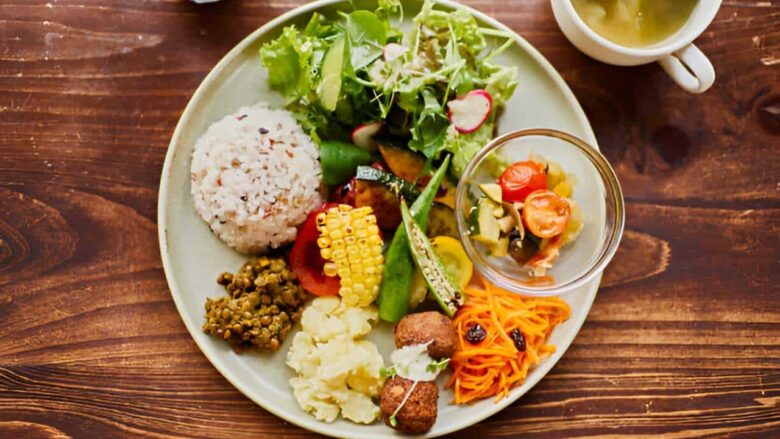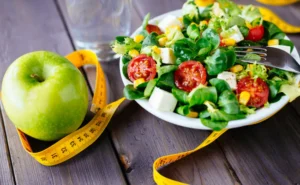Avoiding foods high in fat and sugar is crucial, as eating too many of these items can lead to weight gain.
Processed meats like hot dogs, bacon and sausage contain high levels of sodium and calories; opt for leaner cuts instead.
Many low fat or “diet” foods contain substantial amounts of added sugars; for instance, one 6-ounce container of low fat yogurt with flavor packs contains over four teaspoons.
1. Fruits
Fruit is an ideal natural low-cal sweetener to add to a weight loss diet, providing essential fiber, vitamins, and minerals that support weight maintenance.
Instead of opting for packaged fruit juice, which can contain excessive calories and sugar content, opting for whole fruits provides you with more satisfying chewing action while providing more nutrients than its liquid equivalent.
Watermelons, in particular, contain plenty of vitamin C which is known to boost metabolism and help you shed off more fat. Furthermore, L-citrulline found within this fruit can also reduce excess body fluid while improving bowel movements and overall wellbeing.
2. Vegetables
Dieting can help you achieve weight loss by filling your plate with low-calorie, fiber-rich vegetables that fill you up while leaving less room for starchy sides or fatty proteins at each meal. Furthermore, choosing vegetables with lower glycemic index ratings could help your manage blood sugar better post meals.
Studies examining vegetable intake changes with weight outcomes have found an inverse relationship [33-40]. It appears to have the greatest benefit for individuals who were already overweight at baseline due to poorer diets and an increased risk of unhealthy weight gain. Vegetable varieties high in fiber and low on the glycemic index appear particularly helpful.
3. Lean Meat
Lean meat diets help ensure you meet expert guidelines for protein, fat and calories consumption, as well as reduce heart disease risk and other chronic diseases.
Strive for skinless poultry, pork tenderloin or sirloin chops, lean beef and fish as sources of essential B vitamins and selenium; poultry also provides choline, vitamin B3 and B6.
Avoid processed meats high in saturated fat and salt that can increase your risk of heart disease. Try to limit your daily red and processed meat consumption to no more than 90 g (cooked weight) per day.
4. Whole Grains
Breads, pasta and oatmeal all contain important nutrients that support weight loss, including essential fiber that will keep you feeling full for hours after eating them. When selecting grain-based foods such as these it’s best to choose whole rather than refined grains – in fact the Dietary Guidelines for Americans advise that at least half your grain consumption come from whole grains.
Grains provide essential fiber, iron and B vitamin. However, their carb content can raise your blood sugar. To prevent sudden spikes in your blood sugar level and ensure long-term stability of blood sugar levels choose low glycemic index grains such as those found in bread cereal and pasta products that digest more slowly – also known as slow digesters.
5. Healthy Fats
Healthy fats add flavor and nutrition to food while aiding absorption of essential vitamins and minerals. Consider selecting fats from vegetables, seeds/nuts (especially flax and chia), olive oil and seafood as sources.
One gram of fat provides nine calories of energy, more than carbohydrates or proteins combined. Unused fats can become body fat, leading to obesity and other health problems. Unsaturated fats are preferred; saturated and trans fats as well as added sugars should be avoided.
6. Nuts
Nuts provide an abundance of essential fiber, healthy fats and essential vitamins and minerals; however, their consumption should be done sparingly as they contain many calories.
Studies show that dieters who consume nuts feel more satisfied and are less likely to binge. Furthermore, these dieters tend to be more successful at losing weight long term and maintaining it off.
Select unsalted or lightly salted varieties to reduce sodium intake, while pre-portioning them in small bags makes it easier to stay on track with nutrition needs and weight loss goals. Include them on hot or cold cereal bowls, soups and salads.
7. Whole Eggs
Eggs offer an effective natural tool for weight loss that’s both healthy and sustainable – they contain only 78 calories while providing you with essential protein, essential fats and nearly every vitamin and mineral required by the body.
Eggs have been shown to improve clinical metabolic profiles, such as lipid and glucose regulation, liver function, and protein status. A small 16-week randomized trial involving healthy young adults found that whole egg consumption resulted in significant positive changes for all clinical outcomes measured.
8. Fruit Juice
Sugary drinks like sodas, iced tea and fruit juices increase glucose levels in your body quickly, as the lack of fiber means sugar enters your bloodstream more rapidly – potentially overwhelming insulin’s response mechanism.
Juicers can be part of an effective weight-loss plan when used sparingly and combined with whole fruits and vegetables as well as foods rich in fiber, but any diet which encourages excessive juice consumption could backfire long term. Furthermore, blending whole fruits rather than juicing them allows you to retain their fibre content and achieve a slower release of sugars which promotes satiety and fullness.
9. Snacks
Conventional wisdom states that snacking can actually aid weight loss when executed correctly. Snacking helps stave off extreme hunger that could otherwise cause overeating at subsequent meals, helping prevent any episodes of overeating at one sitting.
As with meals, snacks should consist of a selection of healthy foods. Avoid processed snacks that contain added sugars, fats and sodium.
Stock your fridge and pantry with dietitian-approved snack options instead. An apple with nut butter or handful of berries with yogurt are great examples, while guacamole or low-fat dips contain flavor while providing plant-based proteins as well.




